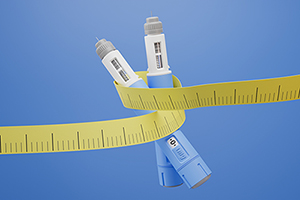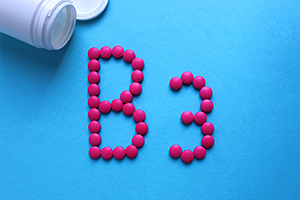



| By Dr. Ronald Hoffman
Twenty-five years ago, when I was first entering practice, the AIDS epidemic was beginning to rage. We had no weapons to combat the ravaging virus. Anti-retroviral drugs had not been invented yet. We tried herbs, intravenous vitamins, ozone therapy . . . they helped some, but patients continued to sicken and die.
Around that time, an innovative New York M.D. named Bernard Bihari proposed an ingenious treatment: Low-dose naltrexone (LDN). He was instantly celebrated by New York’s gay community as an innovator, and AIDS patients flocked to LDN.
By the ’90s, powerful drugs supplanted “guerilla tactics” like LDN as first-line therapy for AIDS, and LDN was virtually forgotten. But lately, LDN has been making a comeback.
In 2007, I wrote an article with pharmacist Skip Lenz about the potential for LDN to treat multiple sclerosis.
“Low-Dose Naltrexone (LDN) and MS” appeared in Action Online, a publication of the United Spinal Association.
What is LDN? LDN is a very low-dose version of a drug used to break dependency in heroin addicts. Dr. Bihari discovered that, when used in small amounts, naltrexone blocks the natural “high” obtained via the body’s own endorphins–“feel-good” neurochemicals produced by healthy persons. Endorphins reinforce the body’s response to pain, injury, exercise and stress. They positively impact immunity and facilitate healing.
The key to LDN’s beneficial effects is its short duration of action. Taken at bedtime, it wears off quickly, and the body rebounds by producing an endorphin “surge.” The resulting endorphin “rush” makes patients feel better, and facilitates recovery.
A new book, The Promise of Low Dose Naltrexone Therapy by Elaine A. Moore and Samantha Wilkinson, provides a detailed scientific explanation of LDN’s mode of action and reviews its benefits in a wide gamut of conditions:
Chronic fatigue syndromes
Fibromyalgia
Infectious diseases
Cancer
Autism spectrum disorders
Ulcerative colitis and Crohn’s disease
Multiple sclerosis
Irritable bowel syndrome
Rheumatoid arthritis
Psoriasis
LDN is neither an immune-enhancer, nor an immunesuppressant. Rather, it regulates immunity via a homeostatic mechanism. Hence, its efficacy in a wide range of conditions calling for optimization of immune response.
My experience with LDN has been very positive, especially in patients with MS and Crohn’s disease.
In one young patient with Crohn’s disease, diet and supplements had yielded only partial resolution. The patient was sick, tired and constantly underweight. After LDN, he got well rapidly, gained strength and weight, his diarrhea abated, and now he attends college with high honors and participates in rigorous ROTC physical training.
Another fatigued MS patient noted virtually instantaneous improvement with LDN. Her sleep improved dramatically, spasticity was eliminated, and she experienced a surge of energy and well-being.
One limitation to the use of LDN is that it appears to be neutralized by high doses of steroid medications, chemo and powerful new immunosuppressive drugs.
Is LDN a “renegade” alternative treatment? Far from it. Clinical trials are under way for a broad range of conditions, and interest is now spreading within the conventional medical community. But because LDN is cheap and not subject to patent protection, drug companies are not interested in sponsoring the kind of huge trials and expensive marketing lavished on new designer drugs.
Though we think of declining estrogen as the hallmark of menopause, it's actually common for…

Up to 12 percent of Americans have ulcers at some point in life. Peptic ulcers…
Gallbladder disease is a modern illness. An estimated 20 million Americans have gallbladder disease. The…

New, more powerful weight loss drugs: Drugs like Wegovy, Rybelsus, Ozempic and Mounjaro/Zepbound are revolutionizing…

According to the Lancet, autoimmune disease affects one in ten people globally and it’s now…

This past week we were regaled with headlines like: High levels of niacin may increase…

Leyla Weighs In: The Erosion of Trust in Nutritional Research

Our virtual voicemail is open 24/7, so there's no need to wait to submit your questions for Dr. Hoffman. Leave a message, and you may hear your question featured on the Intelligent Medicine radio program!